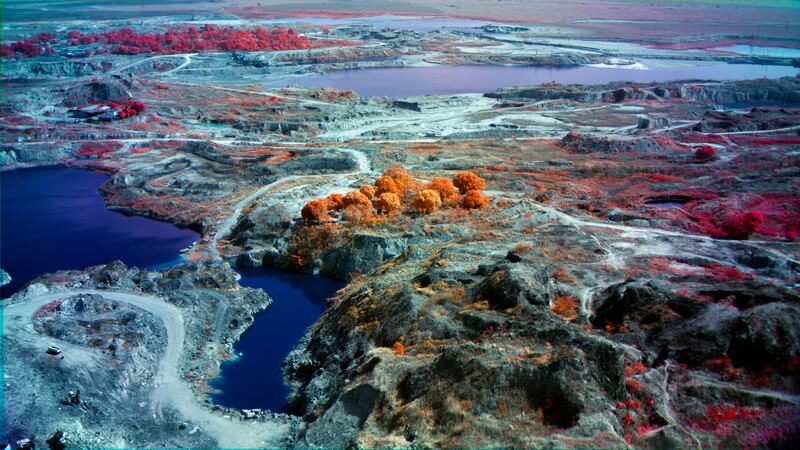You may think you know about the poor state of the world’s ecosystem, but can you really feel that sickness deep within yourself yet?
Broken Spectre, Richard Mosse’s wildly ambitious new installation in London, gets you there, via a dense and unsettling mix of traditional documentary photography and cutting-edge scientific imaging technologies, taking you straight into the unwell heart of Brazil’s rainforest ecocide.

Mosse and his collaborators, the cinematographer Trevor Tweeten and the composer Ben Frost, have worked for five years to produce this comprehensive document of Amazonian destruction, surveying the culled rainforest – ravaged by monocultural farming and illegal mining and logging – from above, the exploited workers in dangerous camps, and the indigenous communities fighting to survive. Macroscopic views of insects and plant life are shown in vivid detail, sparkling in iridescent, ultraviolet hues.
Broken Spectre directly builds on Mosse’s previous projects: the other-worldly, pink infrared spectrums are here, like his explorations of war-torn Congo for the 55th Venice Biennale; as is the unsettling use of thermal imaging cameras, the focus of his 2016 work Heat Maps, which filmed in black and white the holding camps of refugees.
READ MORE
Richard Mosse notes that ”the scale of this catastrophe frequently unfolds in ways that are too vast to comprehend, too minute to perceive, and too normalised to see”. By using these imaging techniques, he can “overcome the inherent challenges of representing climate change to make visible the world’s most crucial ecological war zone”.
The exhibit opens with rooms of large photographic prints, which dazzle both in their visual intensity and explanatory texts, highlighting the deeply layered research and science involved in the work.

But the images serve both as precursor and warning for the main event: an immersive 70-minute nonlinear film, which projects on a huge, multipanelled screen running across the length of a room.
We see flashes of tender-hearted moments with a farming family who use slash-and-burn farming techniques. A trio of horse riders gallop through the dense canopy, with Kurosawa-like martial drumbeats, before their path opens into a newly cleared wasteland. An eerie low-angle camera shot from the prow of a boat drifts towards a half-submerged church in a man-made lake. Miles of cattle ranches where rainforest once stood flow into the slaughterhouse itself. Purple insects come to life. A mining crane slowly rises. Luminous clouds over the infrared barren landscapes slowly pan away.

Mosse’s show presents a rare unity of aesthetic process and layered messaging. As you drill down, every aspect of the work amplifies the story. Any problems you experience with this exhibit won’t be with the quality of the artist’s execution of his work, but rather with the truths he has revealed.
Broken Spectre is at 180 The Strand, London, until December 18















